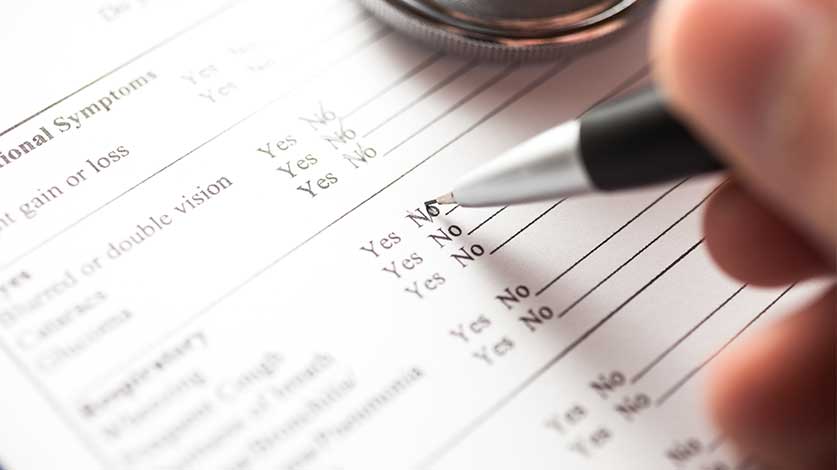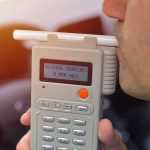If you drink too much alcohol, you will likely become physically dependent on it. That means that when you don’t drink, you may experience alcohol withdrawal syndrome. This syndrome causes unpleasant symptoms that can range from mild headaches to severe seizures.
To determine the severity of a patient’s alcohol withdrawal symptoms, many health care providers use the Clinical Institute Withdrawal Assessment for Alcohol-Revised or CIWA-AR.
What Is CIWA-AR For Alcohol Withdrawal?
The CIWA-AR is an instrument used in the assessment and management of alcohol withdrawal symptoms. It was designed by J.T. Sullivan, K. Sykora, J. Schneiderman, C.A. Naranjo, and E.M. Sellers.
Used in both inpatient and outpatient treatment settings, it helps addiction medicine physicians craft personalized treatment plans for their patients.
For example, a high CIWA-AR score often suggests that a patient needs medications to ease their withdrawal symptoms. The most common medications used to treat alcohol withdrawal are benzodiazepines like chlordiazepoxide (Librium), diazepam (Valium), and lorazepam (Ativan).
The CIWA-AR also helps physicians identify which patients are at risk of developing a severe form of alcohol withdrawal called delirium tremens. This condition causes serious symptoms like confusion, hallucinations, and high blood pressure. When left untreated, it can be life-threatening.
How Does The CIWA-AR Work?
During the CIWA-AR, a physician measures a patient’s experience of ten common alcohol withdrawal symptoms. Each symptom is scored on a scale of 0 to 7 (except Orientation & Clouding Of Sensorium, which is scored on a scale of 0 to 4).
Nausea & Vomiting
The physician will ask the patient if they feel sick or have vomited:
- 0 – no nausea and no vomiting
- 1 – mild nausea and no vomiting
- 2, 3, 4 – intermittent nausea with dry heaves
- 5, 6, 7 – constant nausea with frequent dry heaves and vomiting
Tremors
The physician will ask the patient to extend their arms and fingers. They will then check for any tremors:
- 0 – no tremor
- 1 – not visible, but can be felt fingertip to fingertip
- 2, 3, 4 – moderate, with patient’s arms extended
- 5, 6, 7 – severe, even with arms not extended
Paroxysmal Sweats
The physician will check the patient for any sweat:
- 0 – no sweat visible
- 1 – barely perceptible sweating with palms moist
- 2, 3, 4 – beads of sweat obvious on forehead
- 5, 6, 7 – drenching sweats
Anxiety
The physician will ask the patient if they feel nervous:
- 0 – no anxiety, at ease
- 1 – mildly anxious
- 2, 3, 4 – moderately anxious, or guarded, so anxiety is inferred
- 5, 6, 7 – equivalent to acute panic states as seen in severe delirium or acute schizophrenic reactions
Agitation
The physician will observe the patient’s agitation level:
- 0 – normal activity
- 1 – somewhat more than normal activity
- 2, 3, 4 – moderately fidgety and restless
- 5, 6, 7 – paces back and forth during most of the interview, or constantly thrashes about
Tactile Disturbances
The physician will ask the patient if they experience any itching, pins and needles sensations, burning, numbness, or the sensation of bugs crawling on or under the skin:
- 0 – no tactile disturbances
- 1 – very mild itching, pins and needles, burning, or numbness
- 2 – mild itching, pins and needles, burning, or numbness
- 3 – moderate itching, pins and needles, burning, or numbness
- 4 – moderately severe hallucinations
- 5 – severe hallucinations
- 6 – extremely severe hallucinations
- 7 – continual severe hallucinations
Auditory Disturbances
The physician will ask the patient if they hear any sounds that are harsh, frightening, disturbing, or not really there:
- 0 – not present
- 1 – very mild harshness or ability to frighten
- 2 – mild harshness or ability to frighten
- 3 – moderate harshness or ability to frighten
- 4 – moderately severe hallucinations
- 5 – severe hallucinations
- 6 – extremely severe hallucinations
- 7 – continuous hallucinations
Visual Disturbances
The physician will ask the patient if they are more sensitive to visual stimuli and if they are seeing things that are not really there:
- 0 – not present
- 1 – very mild sensitivity
- 2 – mild sensitivity
- 3 – moderate sensitivity
- 4 – moderately severe hallucinations
- 5 – severe hallucinations
- 6 – extremely severe hallucinations
- 7 – continuous hallucinations
Headache
The physician will ask the patient if their head feels different or painful:
- 0 – not present
- 1 – very mild
- 2 – mild
- 3 – moderate
- 4 – moderately severe
- 5 – severe
- 6 – very severe
- 7 – extremely severe
Orientation & Clouding Of Sensorium
The physician will ask the patient if they know what day it is, where they are, and who the physician is:
- 0 – oriented and can do serial additions
- 1 – cannot do serial additions or is uncertain about date
- 2 – disoriented for date by no more than 2 calendar days
- 3 – disoriented for date by more than 2 calendar days
- 4 – disoriented for place/or person
How Is The CIWA-AR Scored?
After measuring all ten symptoms, the physician adds up the scores to determine the severity of the patient’s withdrawal.
A CIWA score between 8 and 10 suggests mild withdrawal, a score between 8 and 15 suggests moderate withdrawal, and a score of 15 or more suggests severe withdrawal with the potential for delirium tremens.
If you or someone you love struggles with alcohol use, please contact Northeast Addictions Treatment Center. Our compassionate health care providers offer personalized, evidence-based treatments to help you stay healthy and sober.
Next:
- Alcohol Addiction Treatment
- Side Effects Of Alcohol
- Signs Of Alcohol Addiction
- Alcohol Detox Timeline
- How Long Does Alcohol Stay In Your Urine?
Sources:
Department of Veterans Affairs — Addiction Medicine Essentials: Clinical Institute Withdrawal Assessment of Alcohol Scale, Revised (CIWA-Ar)
National Library of Medicine: MedlinePlus — Alcohol withdrawal
University of Maryland School of Medicine — Clinical Institute Withdrawal Assessment of Alcohol Scale, Revised (CIWA-Ar)





